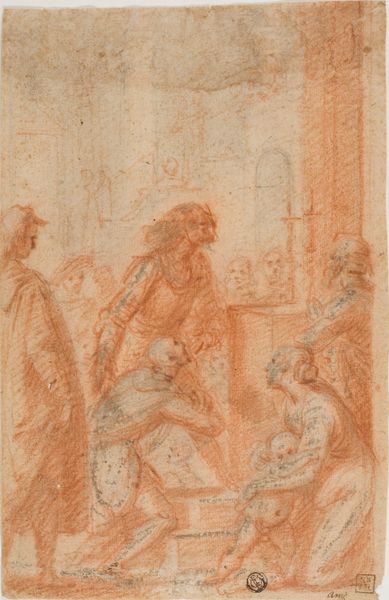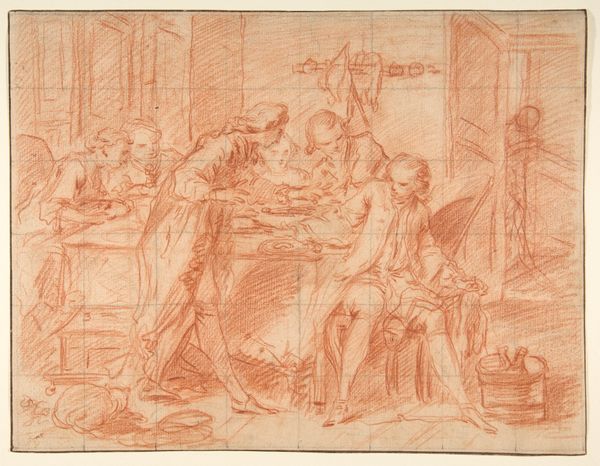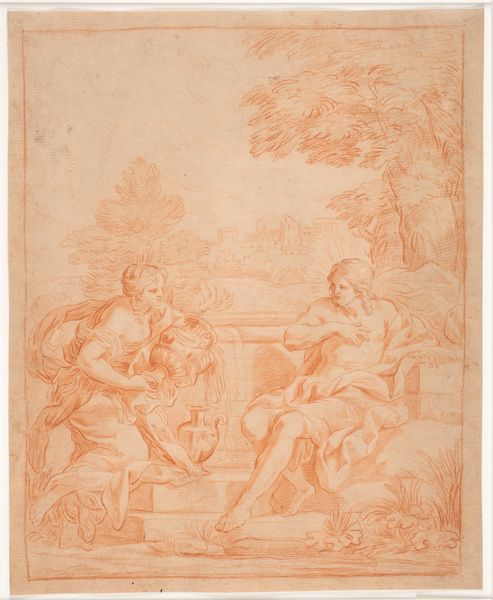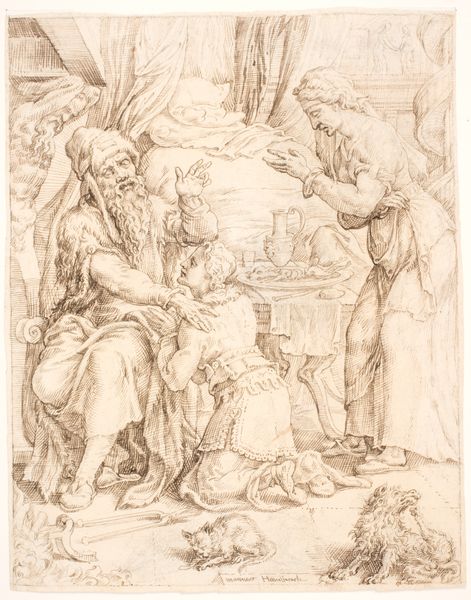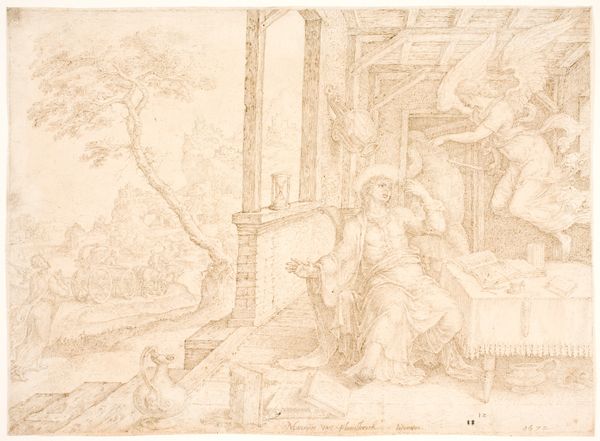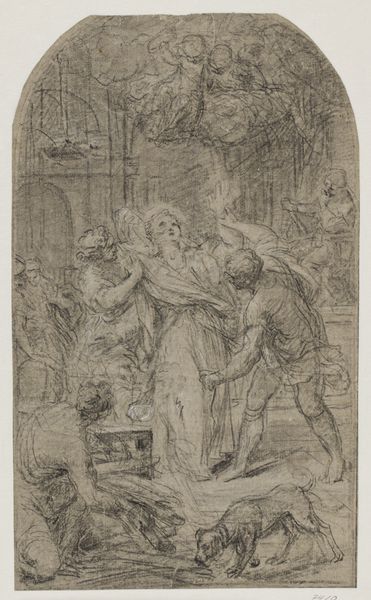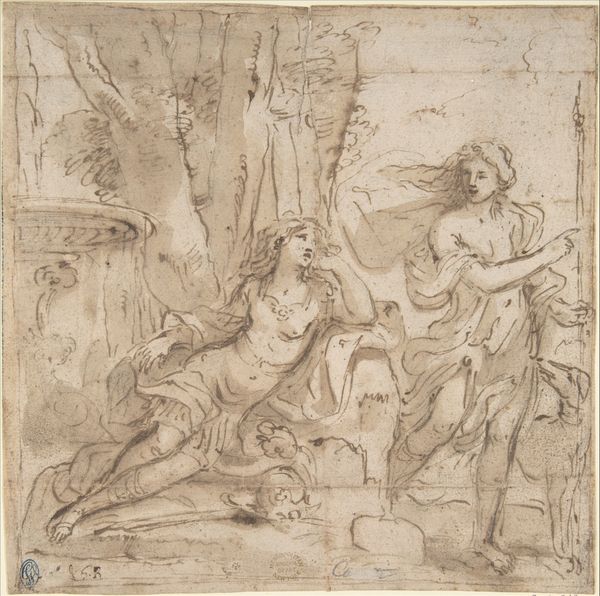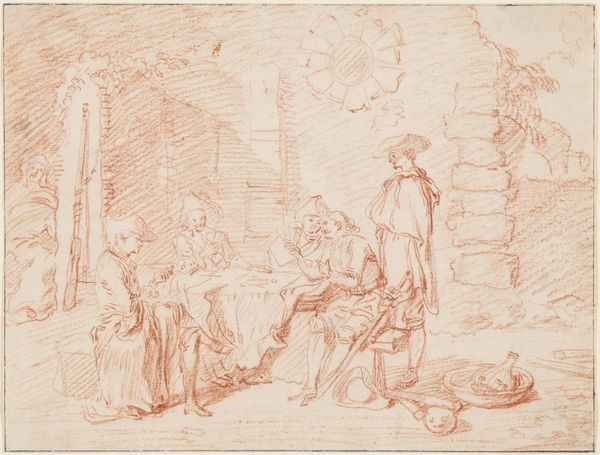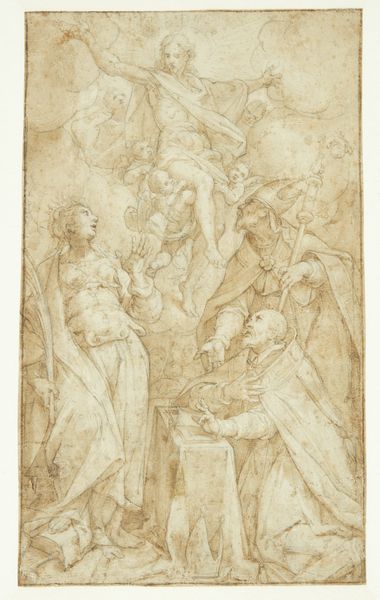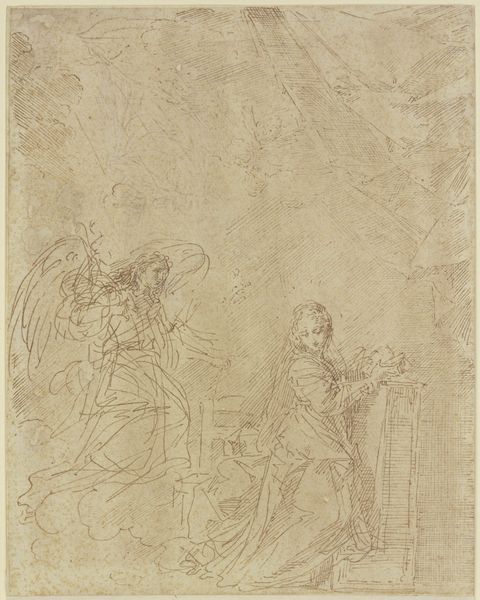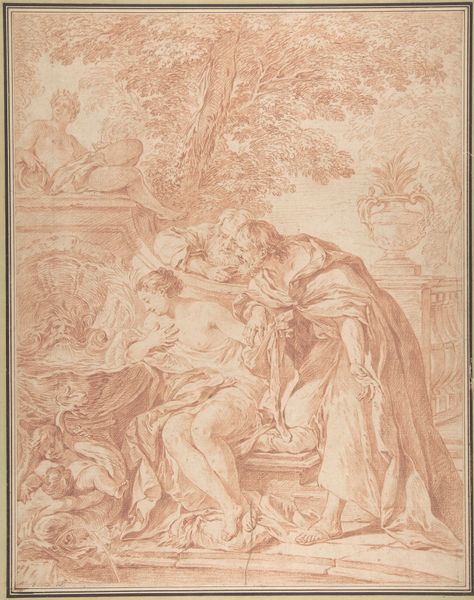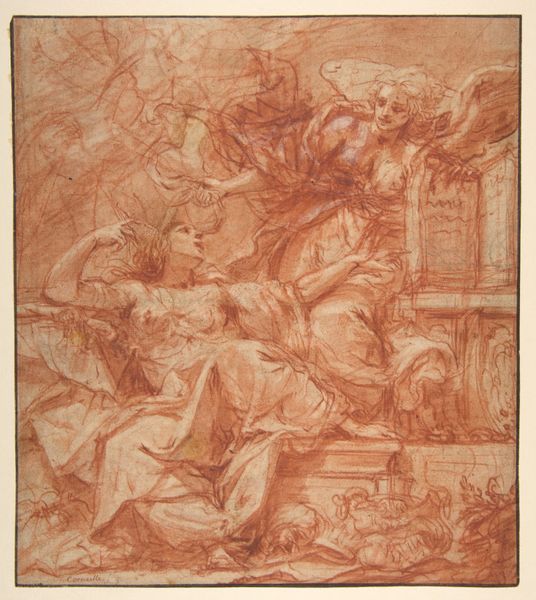
drawing, print, paper, chalk
#
drawing
#
narrative-art
# print
#
figuration
#
paper
#
chalk
#
history-painting
#
academic-art
Dimensions: 241 × 163 mm
Copyright: Public Domain
Curator: Looking at this preliminary drawing titled "Supper at Emmaus," an academic work by Nicolas Bertin, the red chalk practically vibrates on the paper. It’s full of energy! Editor: Yes, the looseness of the sketch really conveys that immediacy, the moment of recognition in the biblical story. It is also impossible to look at this composition and ignore the legacy of patriarchy inherent in the staging of Christ's final supper—even in a study such as this. Curator: Note how Bertin uses broad strokes for the figures' robes, really showcasing his mastery over the chalk medium to convey light and shadow so efficiently. It speaks volumes about the academic system that he trained within. This isn't just religious devotion; it's skill. Editor: Absolutely, but consider the religious iconography within that framework, where the distribution of labor and access were, themselves, socially codified through both secular and divine laws. Who had access to religious stories and the resources to produce art interpreting them? Who did not? Curator: The artist certainly had access! I imagine the paper, chalk, the very act of preparing for a larger history painting—these raw materials are not simple to acquire. Also note the controlled composition. We can trace, from pieces like this, how students learned proportion and design. Editor: Agreed. And examining it further reveals that, beyond the immediate impression, access defines not just its production but also its interpretation. Consider how women may experience narratives so inherently patriarchal... How can those in marginalized positions interpret that original story through Bertin’s representation, layered through these artistic materials, historical setting, and choices. Curator: This kind of prepatory study showcases art not as an inspired stroke, but skilled labor with carefully selected material. We must acknowledge what Bertin knew about material and academic markets of his time. It's important when understanding production! Editor: Precisely, it demands we also critically address the inherent power dynamics shaping these visual traditions—a perspective vital in understanding and contextualizing our encounters with pieces such as Bertin’s academic approach to 'Supper at Emmaus.' Curator: Right, so in essence, even a study in chalk becomes evidence of both devotion and skilled training... Editor: And demands an interrogation of the systems within which "Supper at Emmaus"—as both study and story—was born.
Comments
No comments
Be the first to comment and join the conversation on the ultimate creative platform.
